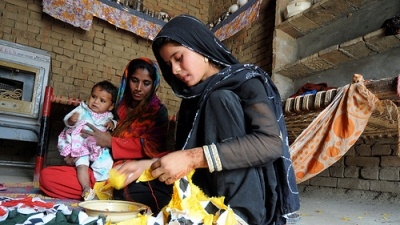Slowing population growth is a challenge with direct implications for all major development issues facing Pakistan. This was the main message delivered by Dr. Zeba Sathar, Pakistan Country Director for the Population Council, in a recent event held at the World Bank in Islamabad. Pakistan’s population, already the world’s sixth largest, is projected to reach 342 million by 2050 at the current level of population planning efforts. With an accelerated family planning program though, Pakistan can keep this number to 266 million, Dr. Sathar said.
In the past 30 years, there has been a population boom in Pakistan, as a result of a fall in mortality rates. This decline, however has not been followed by a fall in fertility rates. With the exception of Afghanistan, Pakistan’s fertility rate of 3.3 births per woman, is the highest in the region, with most other countries near the replacement rate of 2.0. Dr. Sathar recommended a robust focus on bringing down this rate, particularly with promoting family planning services, incorporating them with health and education.
Dr. Sathar discussed the example of how Bangladesh, which had a larger population 1971, today has 25-30 million less people than Pakistan, and is at almost replacement fertility rates. Family planning and community outreach services there, she said, began in the 1970s, with a strong political commitment. In Pakistan, this only happened in the 1990s. Programs were also intersectoral in Bangladesh, with health and population working together, along with strong civil society participation. These lessons should now be incorporated in Pakistan’s efforts, Dr. Sathar said.
There are many notions in the country about why population growth cannot be slowed. These include that the poor want to have more children, and that it is hard to promote contraceptive use in a conservative Muslim society. These ideas however, are false, said Dr. Sathar.
Contraceptive prevalence rates are much higher in many Muslim countries – over 60% in Iran, Turkey, Bangladesh, and Indonesia. Even in Pakistan, more than 50% have used contraceptives but many do not continue due to lack of access. Access to family planning services, particularly for rural poor women, with curtailed mobility and little decision making power, is extremely poor. Though it may have been true in the past, due to many reasons, including economic compulsions, the majority of both women and men in Pakistan, according to Dr. Sathar, do not want more children. This points to one of the major problems in addressing population growth – unwanted fertility. The unwanted fertility rate, in 2007, was 1.1 children, actually an increase from 0.7 in 1991.

